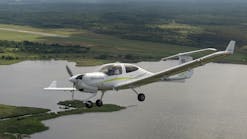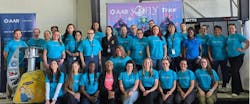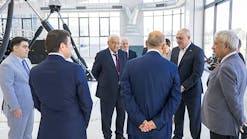I read a coffee cup today; it said: Aircraft Mechanics – In God We Trust. Everything Else, We Ops Check. Yes, it’s an amusing maxim. However, I’ve been talking to my students about how improper operations checks in accidents I investigated led to two separate major accidents. So, now it becomes sound advice. How many other problems could we have averted if only an effective operations check was performed? Would better procedures have worked better?
Speaking of ops checking, I’m looking for a job teaching as an A&P instructor – wait for it, I’ll tie the points together. One place I asked at only does certain A&P classes through computer internet education (CIE), even if the student is in the same town; distance learning, by another name. No classrooms, no face-to-face, just click and type.
In my day job, I’ve been easing middle-aged students into the digital technology world as carefully and effectively as I can, e.g. ‘writing’ on Adobe files, sending lessons to the ‘Cloud’; simple concepts all, yet my generation used hardcover textbooks and carried reams of paperwork home from school. Reading and researching was time-consuming, but words and examples were tangible. More to the point, classes were challenging because if fellow student, Bob, asked a question, it sparked debate in, e.g. Aviation Law. That’s the real learning: back and forth between instructor and students.
Now … I’ll tie my points together. At what stage do we Ops Check the quality of the A&P students’ CIE-type instruction? The likely response: “If they pass the A&P certifications, the CIE was good enough.” And there’s the rub: technical or trade schools’ education should never be ‘good enough’. The two accidents I spoke of earlier? The work performed was ‘good enough’. The Ops Checks accomplished were – technically – ‘good enough’. They did the operations checks right, but there was a breakdown in their communications: Right Tests, Wrong Challenge Replies.
CIE instruction is here to stay; I’m not suggesting otherwise. It’s less expensive: no classroom leasing; no automobile travel expenses, e.g. gas, wear-and-tear. Textbooks are easier to obtain when uploaded as opposed to shipping. The school can even cut back on personnel with less facilities to man or maintain.
There are many other benefits, e.g. when I attended school for my Masters, I took a few CIE classes. Fellow students could be anywhere; one guy was on the USS John F Kennedy (CV-67) operating in the Mediterranean; CIE made his Masters education possible. In a 1999 graduate study class, that type of education worked well.
However, my wife is taking graduate studies CIE courses 18 years later; her challenges are different than mine were. CIE procedures have gone through strange evolutions. Instructors respond only through digital communications – no phone calls, even during office hours – and only then at their convenience. If the system goes down, technical support isn’t always available; answers to class discussion(s) aren’t timely; and if you have a problem with your instructor, the dean or student counselors are only available Monday through Friday, 9 to 5, Eastern Standard Time, right in the middle of my wife’s workday.
But that still doesn’t answer my original question about Ops Checking CIE instruction … or does it? Every form of education and training has its pros and cons: on the job training (OJT), stand-up instruction, simulator. While humans are involved, nothing will be perfect. That’s how it answers my question: these other forms have been proven successful. Why?
With OJT, an instructor gives the benefit of experience to the learner(s) in a straight forward manner. If I (as the learner) had loosened the wrong hydraulic line, my instructor slapped my hand, pointed me to the correct line. He/she never left me to my own devices – that’s training on the most personal level.
Stand-up instruction is different, yet not so much. In my classes I try to incorporate accident investigation risk analysis and apply it to surveillance and inspection; I use ‘war stories’ to reverse the order of events that led to the accident, employ the ‘Five Whys’ and show my students that things aren’t always what they seem. Lessons lead to questions, questions lead to discussions, discussions lead to answers, all within a controlled environment that is conducive to debate. Again, this is training on a personal level.
Simulators of all kinds: full-motion, static and even situational, are a form of OJT mixed with stand-up instruction. Full-motion simulation’s advantage: the instructor controls the circumstances; he/she allows the student(s) to apply what they’ve learned to real scenarios, e.g. navigating a major airport on a rainy night for run/taxi instruction. As the student crosses a runway, a landing 737 comes out of the clouds. After the disaster, discuss the missed options afterward, in safety.
In my experience, static simulation is used with computer-based instruction; it can reproduce a hot start or compressor stall without the real damage or cost of an engine.
Situational simulations give scenarios that force students to use their wits to overcome social, business, or regulatory problems. Then the students analyze, argue, and defend their reactions. All three simulation types: full-motion, static, and situational, are training on a personal level.
My opinion? That is CIE’s Achilles’ Heel; it’s too easy; it joins the rest of the world in being impersonal. Don’t want to speak to your date? Go on Facebook or Twitter. Don’t want to talk to your employee? Send him a text or email. Don’t want to troubleshoot an aileron problem? Ask the aircraft computer. Don’t want the expense and trouble of teaching face-to-face? Only offer CIE classes.
Are we sacrificing effective instruction – true, personal, ‘lead by example’ type instruction – because it is more cost effective not to? If so, it will be years in the future before we see the effects of instructing only through CIE. By then, OJT might mean less. Why? Because we won’t have the social skills to make it work right again. In that case, Ops Checking will be the least of our problems.






